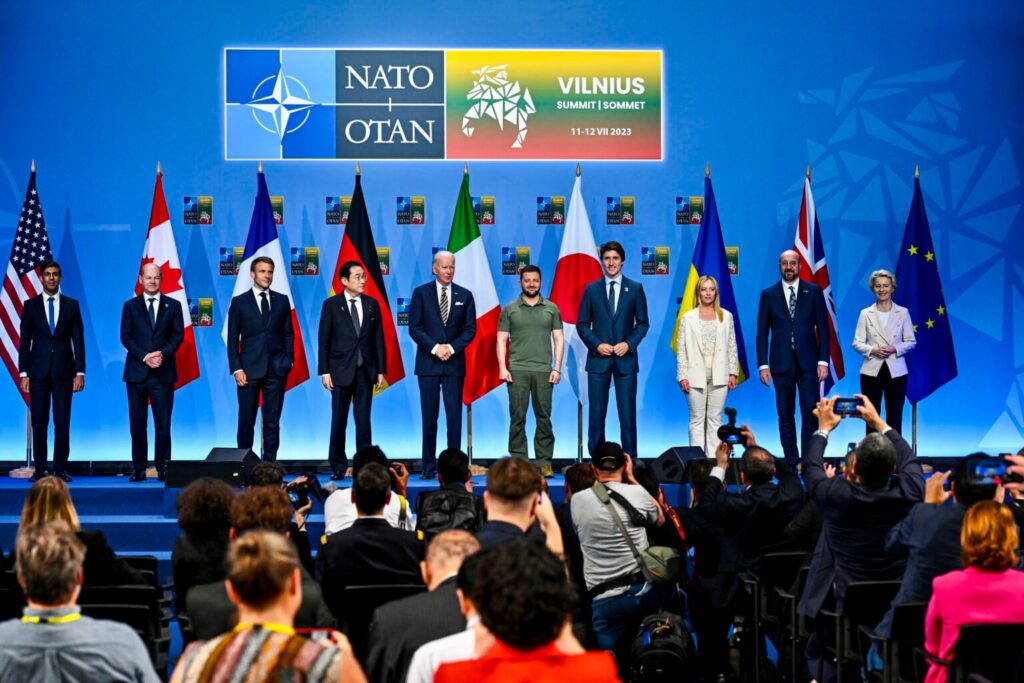
NATO members have never paid for European defense. President Trump demands they pay, and the war in Ukraine scares them into doing so, but they remain dependent on the United States.
The war in Ukraine is a classic example: Ukraine is located in Europe, but the United States funds its defense to protect other European countries from broader threats. The EU’s GDP is about US$16 trillion and it has the ability to pay. At the same time, U.S. defense resources are distributed in multiple theaters. NATO’s 31 member states have 3.5 million troops and a large number of tanks, aircraft, ships and other assets. They could take some of the burden off America, but they choose not to.
Europe relies heavily on the United States for its security, as the United States provides much of the funding, firepower and intelligence that NATO uses for its defense strategy. Historically, NATO has focused on protecting Europe from Russia, but the United States has global foreign policy goals. The United States views China as the biggest threat to its national interests, with Russia ranking second. Therefore, the United States must allocate significant military resources to contain China, while China disperses its resources while aiding NATO and Europe.
It is bad enough that Europe cannot defend itself and must rely on the United States, but after 70 years of American protection, it would be helpful if European allies could now assist the United States in confronting China. NATO is increasingly recognizing the threat from China, and Moscow’s alliance with Beijing has made this threat to Europe more visible. However, Europe is not yet ready to view China as an enemy.
NATO’s defense strategy depends on various strategic documents issued by the U.S. Department of Defense, State Department, and the intelligence community. U.S. national security is guided by the National Security Strategy (NSS), National Defense Strategy (NDS), Indo-Pacific Strategy, and Nuclear Posture Review. Likewise, NATO’s strategy is driven by the NATO Strategic Concept and the Secretary-General’s annual reports. These strategic documents of the United States will be updated in 2022, and NATO also updated its strategic concept in the same year, showing that NATO needs strategic coordination with the United States.
The National Defense Strategy (NDS) outlines the Department of Defense’s strategic approach to addressing global security challenges, focusing on the primary threats to U.S. national security. Its priorities are strengthening alliances, increasing lethality and reforming the sector to improve efficiency. NDS emphasizes competition with near-peer adversaries such as China and Russia, while also addressing threats from rogue states and non-state actors.
The U.S. National Security Strategy (NSS) outlines how the United States plans to advance its vital interests and address global challenges. It emphasizes strategic competition, particularly with China and Russia, and outlines plans to strengthen alliances, invest in U.S. power and influence, and modernize the military.
The Indo-Pacific Strategy emphasizes the importance of the Indo-Pacific region to global security and outlines U.S. efforts to strengthen alliances and partnerships in the region. Its goal is to ensure a free and open Indo-Pacific region, counter China’s influence, and maintain regional stability.
The 2022 Nuclear Posture Review (NPR) reaffirmed the role of nuclear weapons in deterring a nuclear attack on the United States and its allies and partners. It emphasizes the need for a safe, secure and effective nuclear deterrent, while also emphasizing efforts to reduce nuclear risks. The review identified Russia and China as the main nuclear adversaries and outlined plans to modernize the U.S. nuclear arsenal.
NATO Strategic Concept NATO’s Strategic Concept 2022 outlines priorities for the next decade, responding to the changing security environment and key threats. It emphasizes collective defense, crisis management and cooperative security, while addressing emerging threats such as cyberattacks, space security and the impacts of climate change.
The United States has formulated an independent Indo-Pacific strategy document, and NATO’s Indo-Pacific strategy incorporates its strategic concepts and describes them in more detail in the “Strategic Forward-looking Regional Outlook Report” released in the same year as the U.S. Indo-Pacific strategy.
The documents emphasize the global security importance of the region and focus on engagement with key regional partners (Australia, Japan, South Korea and New Zealand). They address security challenges from Chinese influence without viewing China as an enemy.
In addition, NATO’s engagement with Indo-Pacific countries includes areas such as maritime security, cyber defense, and maintenance of a rules-based international order, but does not involve mutual defense agreements. Although 70% of global shipping passes through the Indo-Pacific region, NATO does not even conduct freedom of navigation patrols.
When Trump complained that the United States paid for nearly all of NATO’s funding, the media attacked him and cited specific amounts of U.S. donations to the organization. However, the United States’ financial commitment to NATO goes far beyond direct contributions. NATO relies heavily on U.S. intelligence for strategic planning.
The U.S. Intelligence Community provides a comprehensive annual threat assessment that assesses current threats to national security. In addition, the United States also releases specific annual reports such as the “Military and Security Updates of the People’s Republic of China”. NATO produces no similar report, not even an annual report covering security developments in Russia, NATO’s main adversary.
For 70 years, NATO and Europe have relied on U.S. intelligence reports, defense and security resources, and funding. As the U.S. becomes embroiled in costly conflicts in Ukraine and Israel, defends Taiwan, fights the Houthis, conducts freedom of navigation patrols to keep the Indo-Pacific open to commercial shipping, and prepares for possible war with China, Russia and Iran , now is the time for NATO and Europe to declare China an enemy, step up and share the financial and military burden of national defense.

